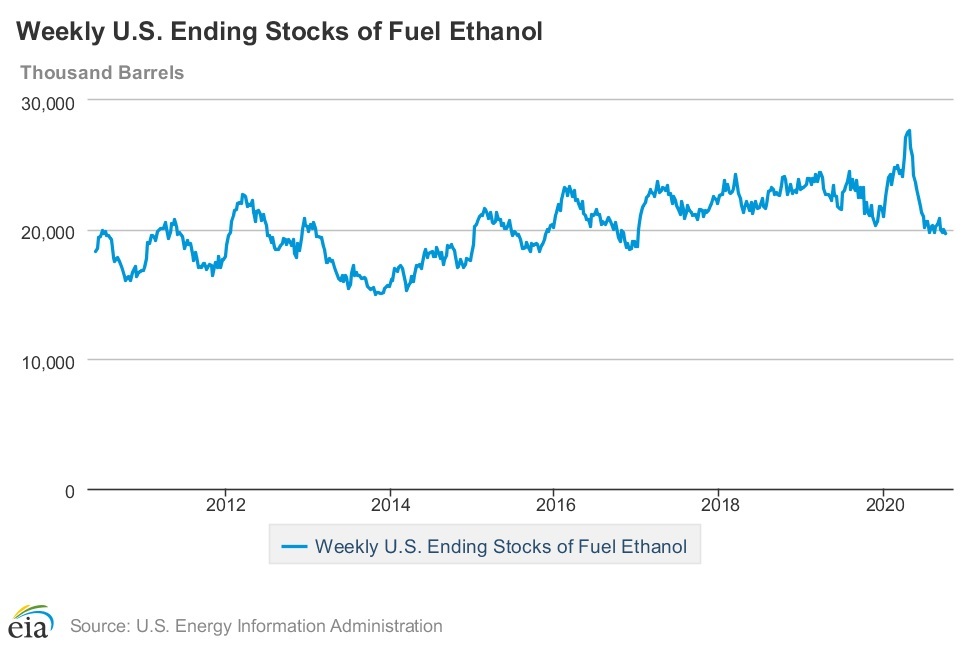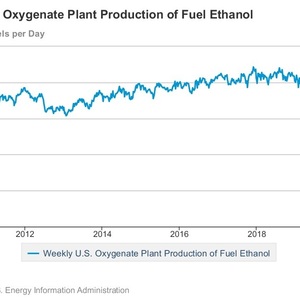EIA: Ethanol production down 3%, stocks fall by 2%



September 30, 2020
BY Erin Krueger
U.S. fuel ethanol production fell by approximately 3 percent the week ending Sept. 25 while weekly ethanol ending stocks fell by nearly 2 percent, according to data released by the U.S. Energy Information Administration on Sept. 30.
U.S. ethanol production fell to an average of 881,000 barrels per day the week ending Sept. 25, down 25,000 barrels per day when compared to the 906,000 barrels per day produced the previous week. When compared to the 958,000 barrels per day produced during the same week of 2019, production was down 77,000 barrels per day.
Advertisement
Production of fuel ethanol has stabilized in recent months after falling to a historic lows last spring due to the market impacts caused by the COVID-19 pandemic.
Ethanol production hit a low of 537,000 barrels per day the week ending April 24, but began to recover in May and June as travel restrictions associated with the pandemic began to ease and demand for transportation fuel began to recover. Production levels since July have generally stabilized in the range of 900,000 to 950,000 barrels per day, down roughly 10 percent when compared to the same period of last year. The week ending Sept. 25 marks a 15-week low in production. The last time production dipped below the 900,000 barrel per day mark was in mid-June.
Advertisement
Weekly ending stocks of fuel ethanol fell to 19.691 million barrels, down 306,000 barrels when compared to the 19.997 million barrels reported for the previous week. Stocks of fuel ethanol have fallen over the past few months after reaching a record high of 27.289 million barrels the week ending April 17. When compared to the same week of last year, ethanol stocks were down 3.528 million barrels.
Related Stories
The U.S. Energy Information Administration maintained its forecast for 2025 and 2026 biodiesel, renewable diesel and sustainable aviation fuel (SAF) production in its latest Short-Term Energy Outlook, released July 8.
XCF Global Inc. on July 10 shared its strategic plan to invest close to $1 billion in developing a network of SAF production facilities, expanding its U.S. footprint, and advancing its international growth strategy.
U.S. fuel ethanol capacity fell slightly in April, while biodiesel and renewable diesel capacity held steady, according to data released by the U.S. EIA on June 30. Feedstock consumption was down when compared to the previous month.
XCF Global Inc. on July 8 provided a production update on its flagship New Rise Reno facility, underscoring that the plant has successfully produced SAF, renewable diesel, and renewable naphtha during its initial ramp-up.
The USDA’s Risk Management Agency is implementing multiple changes to the Camelina pilot insurance program for the 2026 and succeeding crop years. The changes will expand coverage options and provide greater flexibility for producers.
Upcoming Events










